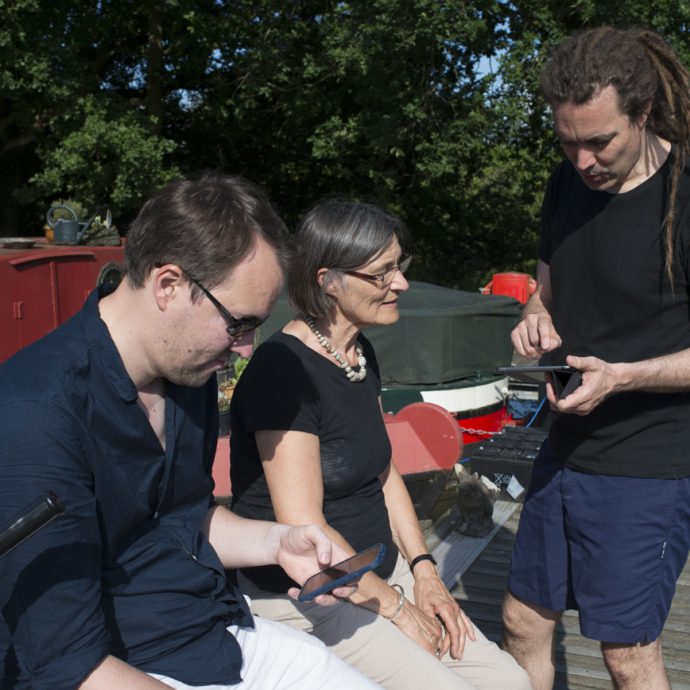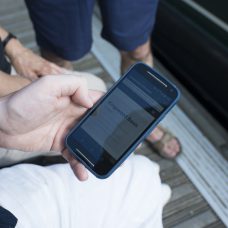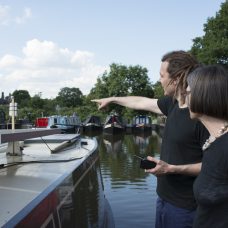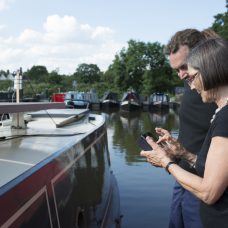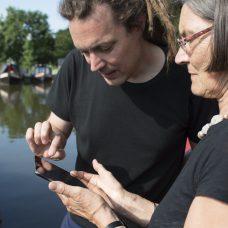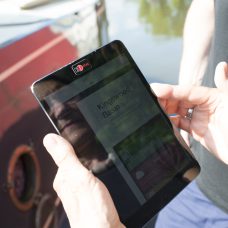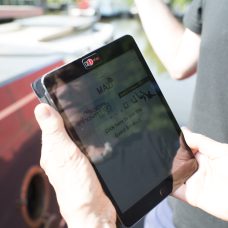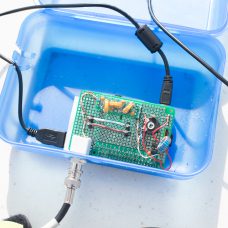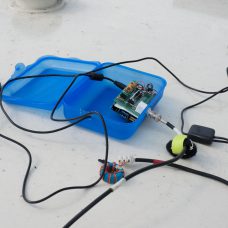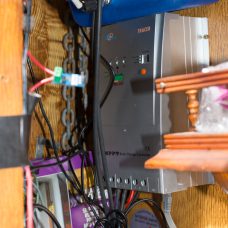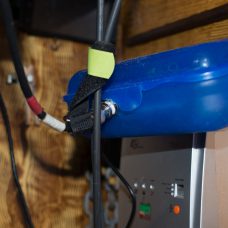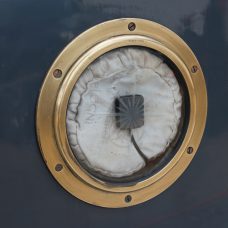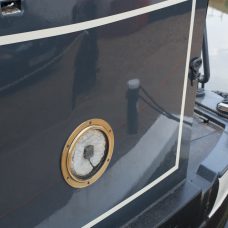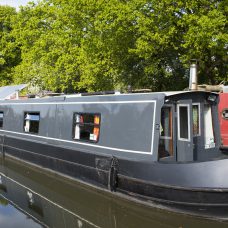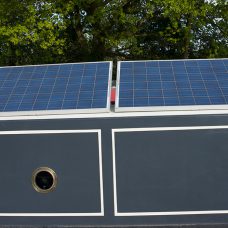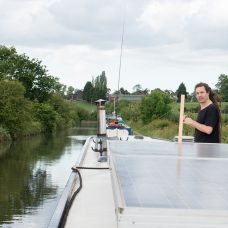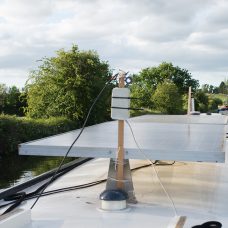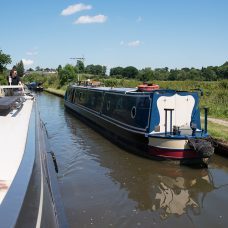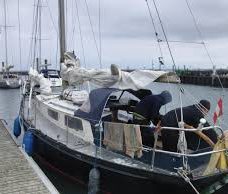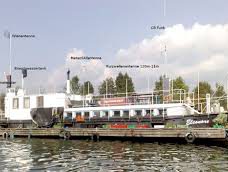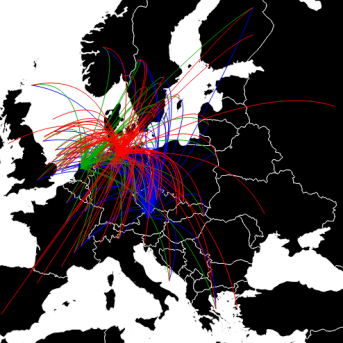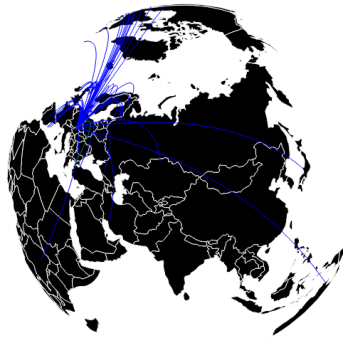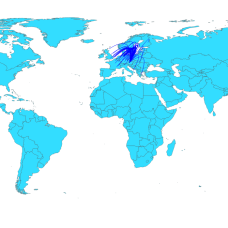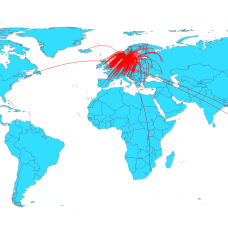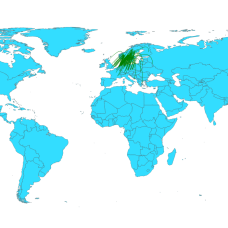Today we launched the “7076 – It’s not a Test” art project on Quintessence.
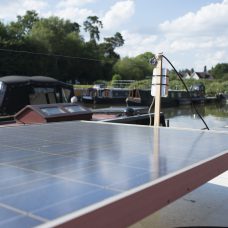
boattr_MAZI workshop Kingswood basin June 2017
“7067 khz – it`s not a test” calls for daily transmission of automatically/manually generated radio signals from different stations around the world at scheduled time slots. Recalling the sputnik satellite’s outer space broadcast of radio pulses in the fifties, Eleonore’s 7067khz inverts the space signals to earth signals, calling for like-minded media/cultural spaces to sign on for signal sending. In honor of the first radio artists who were using the signals as a material for art, the 7067khz stands for independent information and communication bypassing the use of internet. We do not want to specify the content of the transmission, rather we consider the act of sending the signals an act of solidarity in this post-internet future present. We managed only to get two connect, due to issues with the antenna. We will have to fix this.
The PI should send on the antenna on pin4 (clkout). But only did so in the below mention connections. The problem might be the noise. We might have to look into getting a Band Pass Filter kit (between pin4 and antenna). The antenna seems to be the most difficult bit, we might want to look into a 1:9 Balun antenna (34 mm).

One can look it up by visiting WSPRnet and specify parameters and our callsign (qa5iqc). The two connects were on 16/6 & 17/6:
2017-06-17 17:26 QA5IQC 7.040128 -26 0 JO92 0.5 G4KRW IO92fv 1378 280
2017-06-16 18:10 QA5IQC 7.040124 -27 -1 JO92 0.5 G3JKV IO91uf 1325 272
Funny enough our boattr neighbor was also experimenting with radio, but on the aprs – Automatic Packet Reporting System.
The Automatic Packet Reporting System was designed to support rapid, reliable exchange of information for local, tactical real-time information, events or nets. The concept, which dates back to the mid 1980’s, is that all relevant information is transmitted immediately to everyone in the net and every station captures that information for consistent and standard display to all participants. Information was refreshed redundantly but at a decaying rate so that old information was updated less frequently than new info. Since the primary objective is consistent exchange of information between everyone, APRS established standard formats not only for the transmission of POSITION, STATUS, MESSAGES, and QUERIES, it also establishes guidelines for display so that users of different systems will still see the same consistent information displayed in a consistent manner (independent of the particular display or maping system in use).
“7067 khz – it`s not a test” is an Eleonore/stwst project that serves as cultural backbone for Stadtwerkstatt’s media art activities. As part of Stadtwerkstatt’s cultural initiatives, the 100 year old Station Messschiff Eleonore docked at the Danube harbor in Linz has since 2009 been powered by solar energy, equipped with radio components and modified to host artists in residency. Based on *Der Backensender – Automatic Beacon Transponder (ABT11)* proposed by Nina Wernhard, Armin Medosch and Franz Xaver in 2011, this year Eleonore/stwst launches “7067 khz – it`s not a test”, using the frequency of 7067khz in a new artistic and cultural contexts.
“7067 khz – it`s not a test” calls for daily transmission of automatically/manually generated radio signals from different stations around the world at scheduled time slots. Recalling the sputnik satellite’s outer space broadcast of radio pulses in the fifties, Eleonore’s 7067khz inverts the space signals to earth signals, calling for like-minded media/cultural spaces to sign on for signal sending. In honor of the first radio artists who were using the signals as a material for art, the 7067khz stands for independent information and communication bypassing the use of internet. We do not want to specify the content of the transmission, rather we consider the act of sending the signals an act of solidarity in this post-internet future present.
We call for artists to send in the signals in SSTV (slowscan TV) and CW (continuous wave) automatically or manually. With ham radio equipments and monitors at the exhibition space, the visitors can follow the signals sent from different stations with low-res pictures and amplified sound output.

We are broadcasting signals on the Frequency of 7067 khz. Like The signal of Sputnik – it is not important want you are broadcasting its important that you are broadcasting. Like the Signal of Sputnik 1957 the broadcast itself is the politcal message.
Each Participant is sending who am i, where am i and i im attendance. 7067 khz is a HAM-Radio Frequencies so if you want to be in the Network you have to make the HAM Licence or find a Ham-operator who is working with you.
How can i be participate:
-
Find an Ham-operator who has the knowledge and the devices to do this.
-
Make a Ham Licence and buy the devices
-
We are temporarly operating your node.
Normal work during the year:
All nodes of the network are sending at diffrent time there callsign. The shedule is coordinated at the Website 7067.stwst.at. Each station should send not more then three times per day.
Working during Events, Festivals and Exhibitions:
The radio jam session : The nodes of the Network are trying to reach an designated destination (for Example an Exhibition)
What kind of signal we do prefer:
We prefer signals with small bandwith like cw or sstv. With sstv you are converting a picture into a audiofile and broadcast this audiofile with SSB technologie. We also supporting and featuring WSPRnet.org. Wspr means Weak Signal Propagation Reporte – In this technology you have very small power consumation. With 2 Watt you can boadcast 2 times around the world. The bandwith of information is also very low – about 32 bit in 5 minutes But the common is SlowScanTV. SSTV working with Pictures and Pitcures are very compatible to exhibitions with audience who has no knowledge about informationtheorie. Once more: it is not important what you are broadcasting its importand that you are broadcasting.
Which devices can i use:
You can buy and build your own devices. But you also can buy a device from us. We are offering a raspberry pi with a camera, touchscreen and sdr (software defined radio). SDR is making a softwareradio for 7067 khz. The cam on the system is automatically making the picture an broadcast it. You only need a RF amplifier to broadcast the signal.
Information technology is increasingly becoming a power factor in a globally networked world. Algorythms control the global information networks. We secure information about autonomous networks and offer the possibility of independent information transmission. We do not want to stand in competition with the global information players of the capital. That’s why we reduce the bandwidth of our information transfers to a few hertz. Independence has the price of information reduction and reduction does not mean total loss of control.
Funkfeuer.de is an autonomous information network based on WSPR and JP65 technology. The radio technology of John Taylor offers enormous ranges through small bandwidths. The transmission of information is thereby reduced to status messages. The aim of the project is to create a dedicated minimalist network in the freely available CB radio band.
Water and information: Information plays an important role in evolution. It is unclear if information was available before evolution or evolution evolved the information. The second important factor in evolution was and is the water. Water enabled life and thus information storage via the DNS.
At the moment, network nodes are operating on ships in Venice, Hamburg, Amsterdam and Linz.
Raspberry Pi bareback LF/MF/HF/VHF WSPR transmitter. The code can be donwloaded from GitHub.
Raspberry Pi bareback LF/MF/HF/VHF WSPR transmitter
Makes a very simple WSPR beacon from your RasberryPi by connecting GPIO
port to Antenna (and LPF), operates on LF, MF, HF and VHF bands from
0 to 250 MHz.
Compatible with the original Raspberry Pi, the Raspberry Pi 2/3, and
the Pi Zero.
!!!!!!
2017-04-21
Do note that some users have been reporting lockups with recent OS versions.
I have not been able to reproduce the problems on my RPI1 and RPI3 running
the latest Jessie-Lite.
https://github.com/JamesP6000/WsprryPi/issues/6#issuecomment-296233932
!!!!!!
******
Installation / update:
******
Download and compile code:
sudo apt-get install git
git clone https://github.com/JamesP6000/WsprryPi.git
cd WsprryPi
make
Install to /usr/local/bin:
sudo make install
Uninstall:
sudo make uninstall
******
Usage: (WSPR --help output):
******
If running from the console, recent versions of Jessie cause WsprryPi to
crash when the console screen blanks. The symptom is that WsppryPi works
for several transmissions and then crashes. The fix is to add "consoleblank=0"
to /boot/cmdline.txt.
https://github.com/JamesP6000/WsprryPi/issues/10
Usage:
wspr [options] callsign locator tx_pwr_dBm f1 <f2> <f3> ...
OR
wspr [options] --test-tone f
Options:
-h --help
Print out this help screen.
-p --ppm ppm
Known PPM correction to 19.2MHz RPi nominal crystal frequency.
-s --self-calibration
Check NTP before every transmission to obtain the PPM error of the
crystal (default setting!).
-f --free-running
Do not use NTP to correct frequency error of RPi crystal.
-r --repeat
Repeatedly, and in order, transmit on all the specified command line
freqs.
-x --terminate <n>
Terminate after n transmissions have been completed.
-o --offset
Add a random frequency offset to each transmission:
+/- 80 Hz for WSPR
+/- 8 Hz for WSPR-15
-t --test-tone freq
Simply output a test tone at the specified frequency. Only used
for debugging and to verify calibration.
-n --no-delay
Transmit immediately, do not wait for a WSPR TX window. Used
for testing only.
Frequencies can be specified either as an absolute TX carrier frequency, or
using one of the following strings. If a string is used, the transmission
will happen in the middle of the WSPR region of the selected band.
LF LF-15 MF MF-15 160m 160m-15 80m 60m 40m 30m 20m 17m 15m 12m 10m 6m 4m 2m
<B>-15 indicates the WSPR-15 region of band <B>.
Transmission gaps can be created by specifying a TX frequency of 0
Note that 'callsign', 'locator', and 'tx_power_dBm' are simply used to fill
in the appropriate fields of the WSPR message. Normally, tx_power_dBm should
be 10, representing the signal power coming out of the Pi. Set this value
appropriately if you are using an external amplifier.
******
Radio licensing / RF:
******
In order to transmit legally, a HAM Radio License is REQUIRED for running
this experiment. The output is a square wave so a low pass filter is REQUIRED.
Connect a low-pass filter (via decoupling C) to GPIO4 (GPCLK0) and Ground pin
of your Raspberry Pi, connect an antenna to the LPF. The GPIO4 and GND pins
are found on header P1 pin 7 and 9 respectively, the pin closest to P1 label
is pin 1 and its 3rd and 4th neighbour is pin 7 and 9 respectively. See this
link for pin layout: http://elinux.org/RPi_Low-level_peripherals
Examples of low-pass filters can be found here:
http://www.gqrp.com/harmonic_filters.pdf
TAPR makes a very nice shield for the Raspberry Pi that is pre-assembled,
performs the appropriate filtering for the 20m band, and also increases
the power output to 20dBm! Just connect your antenna and you're good-to-go!
https://www.tapr.org/kits_20M-wspr-pi.html
The expected power output is 10mW (+10dBm) in a 50 Ohm load. This looks
neglible, but when connected to a simple dipole antenna this may result in
reception reports ranging up to several thousands of kilometers.
As the Raspberry Pi does not attenuate ripple and noise components from the
5V USB power supply, it is RECOMMENDED to use a regulated supply that has
sufficient ripple supression. Supply ripple might be seen as mixing products
products centered around the transmit carrier typically at 100/120Hz.
DO NOT expose GPIO4 to voltages or currents that are above the specified
Absolute Maximum limits. GPIO4 outputs a digital clock in 3V3 logic, with a
maximum current of 16mA. As there is no current protection available and a DC
component of 1.6V, DO NOT short-circuit or place a resistive (dummy) load
straight on the GPIO4 pin, as it may draw too much current. Instead, use a
decoupling capacitor to remove DC component when connecting the output dummy
loads, transformers, antennas, etc. DO NOT expose GPIO4 to electro- static
voltages or voltages exceeding the 0 to 3.3V logic range; connecting an
antenna directly to GPIO4 may damage your RPi due to transient voltages such
as lightning or static buildup as well as RF from other transmitters
operating into nearby antennas. Therefore it is RECOMMENDED to add some form
of isolation, e.g. by using a RF transformer, a simple buffer/driver/PA
stage, two schottky small signal diodes back to back.
******
TX Timing:
******
This software is using system time to determine the start of WSPR
transmissions, so keep the system time synchronised within 1sec precision,
i.e. use NTP network time synchronisation or set time manually with date
command. A WSPR broadcast starts on an even minute and takes 2 minutes for
WSPR-2 or starts at :00,:15,:30,:45 and takes 15 minutes for WSPR-15. It
contains a callsign, 4-digit Maidenhead square locator and transmission
power. Reception reports can be viewed on Weak Signal Propagation Reporter
Network at: http://wsprnet.org/drupal/wsprnet/spots
******
Calibration:
******
As of 2017-02, NTP calibration is enabled by default and produces a
frequency error of about 0.1 PPM after the Pi has temperature stabilized
and the NTP loop has converged.
Frequency calibration is REQUIRED to ensure that the WSPR-2 transmission
occurs within the narrow 200 Hz band. The reference crystal on your RPi might
have an frequency error (which in addition is temp. dependent -1.3Hz/degC
@10MHz). To calibrate, the frequency might be manually corrected on the
command line or a PPM correction could be specified on the command line.
NTP calibration:
NTP automatically tracks and calculates a PPM frequency correction. If you
are running NTP on your Pi, you can use the --self-calibration option to
have this program querry NTP for the latest frequency correction before
each WSPR transmission. Some residual frequency error may still be present
due to delays in the NTP measurement loop and this method works best if your
Pi has been on for a long time, the crystal's temperature has stabilized,
and the NTP control loop has converged.
AM calibration:
A practical way to calibrate is to tune the transmitter on the same frequency
of a medium wave AM broadcast station; keep tuning until zero beat (the
constant audio tone disappears when the transmitter is exactly on the same
frequency as the broadcast station), and determine the frequency difference
with the broadcast station. This is the frequency error that can be applied
for correction while tuning on a WSPR frequency.
Suppose your local AM radio station is at 780kHz. Use the --test-tone option
to produce different tones around 780kHz (eg 780100 Hz) until you can
successfully zero beat the AM station. If the zero beat tone specified on the
command line is F, calculate the PPM correction required as:
ppm=(F/780000-1)*1e6 In the future, specify this value as the argument to the
--ppm option on the comman line. You can verify that the ppm value has been
set correction by specifying --test-tone 780000 --ppm <ppm> on the command
line and confirming that the Pi is still zero beating the AM station.
******
PWM Peripheral:
******
The code uses the RPi PWM peripheral to time the frequency transitions
of the output clock. This peripheral is also used by the RPi sound system
and hence any sound events that occur during a WSPR transmission will
interfere with WSPR transmissions. Sound can be permanently disabled
by editing /etc/modules and commenting out the snd-bcm2835 device.
******
Example usage:
******
Brief help screen
./wspr --help
Transmit a constant test tone at 780 kHz.
sudo ./wspr --test-tone 780e3
Using callsign N9NNN, locator EM10, and TX power 33 dBm, transmit a single
WSPR transmission on the 20m band using NTP based frequency offset
calibration.
sudo ./wspr N9NNN EM10 33 20m
The same as above, but without NTP calibration:
sudo ./wspr --free-running N9NNN EM10 33 20m
Transmit a WSPR transmission slightly off-center on 30m every 10 minutes for
a total of 7 transmissions, and using a fixed PPM correction value.
sudo ./wspr --repeat --terminate 7 --ppm 43.17 N9NNN EM10 33 10140210 0 0 0 0
Transmit repeatedly on 40m, use NTP based frequency offset calibration,
and add a random frequency offset to each transmission to minimize collisions
with other transmitters.
sudo ./wspr --repeat --offset --self-calibration N9NNN EM10 33 40m
******
Reference documentation:
******
http://www.raspberrypi.org/wp-content/uploads/2012/02/BCM2835-ARM-Peripherals.pdf
http://www.scribd.com/doc/127599939/BCM2835-Audio-clocks
http://www.scribd.com/doc/101830961/GPIO-Pads-Control2
https://github.com/mgottschlag/vctools/blob/master/vcdb/cm.yaml
https://www.kernel.org/doc/Documentation/vm/pagemap.txt
******
Credits:
******
Credits goes to Oliver Mattos and Oskar Weigl who implemented PiFM [1]
based on the idea of exploiting RPi DPLL as FM transmitter.
Dan MD1CLV combined this effort with WSPR encoding algorithm from F8CHK,
resulting in WsprryPi a WSPR beacon for LF and MF bands.
Guido PE1NNZ <pe1nnz@amsat.org> extended this effort with DMA based PWM
modulation of fractional divider that was part of PiFM, allowing to operate
the WSPR beacon also on HF and VHF bands. In addition time-synchronisation
and double amount of power output was implemented.
James Peroulas <james@peroulas.com> added several command line options, a
makefile, improved frequency generation precision so as to be able to
precisely generate a tone at a fraction of a Hz, and added a self calibration
feature where the code attempts to derrive frequency calibration information
from an installed NTP deamon. Furthermore, the TX length of the WSPR symbols
is more precise and does not vary based on system load or PWM clock
frequency.
Michael Tatarinov for adding a patch to get PPM info directly from the
kernel.
Retzler András (HA7ILM) for the massive changes that were required to
incorporate the mailbox code so that the RPi2 and RPi3 could be supported.
[1] PiFM code from
http://www.icrobotics.co.uk/wiki/index.php/Turning_the_Raspberry_Pi_Into_an_FM_Transmitter
[2] Original WSPR Pi transmitter code by Dan:
https://github.com/DanAnkers/WsprryPi
[3] Fork created by Guido:
https://github.com/threeme3/WsprryPi
[4] This fork created by James:
https://github.com/JamesP6000/WsprryPi
Wir sind drauf und dran ein weltweites Radionetzwerk aufzubauen. Das Netzwerk soll vorerst auf Basis der wspr Technologie starten. Angelehnt ist es auch die Amateurfunkideologie: “Es geht nur um den Kontakt und den Report der einzelnen Nodes zu verifizieren” Eine autonomes physikalisches Netzwerk im Zeitlalter des Internet zu schaffen. Politisch für die Kunst zu agieren. Wie der Sputnik-Satellit der mit seiner Nachricht in den 50iger Jahren “ich bin hier” doch eine politisches Erdbeben erzeugte.
Starten würden wir das Netzwerk vorerst nur auf Booten. Stubnitz HAmburg, Illutron Kopenhagen und Quintessence, wir haben noch 2 boote in amsterdam und hamburg. Wir haben auch schon temporaere Nodes bei Picksel in Bergen und APO33 in Nantes aufgebaut — Raites und Rasa in Riga haben auch Interesse gezeigt.
Die Antenne ist meist der groesste Aufwand. Als HArdware genuegt ein Rasbperry mit dem man ohne Verstaerung direkt aus einem IO-Pin heraus auf die Antenne bis 1000km senden kann… super technik, aber nur 6 hz bandbreite.


